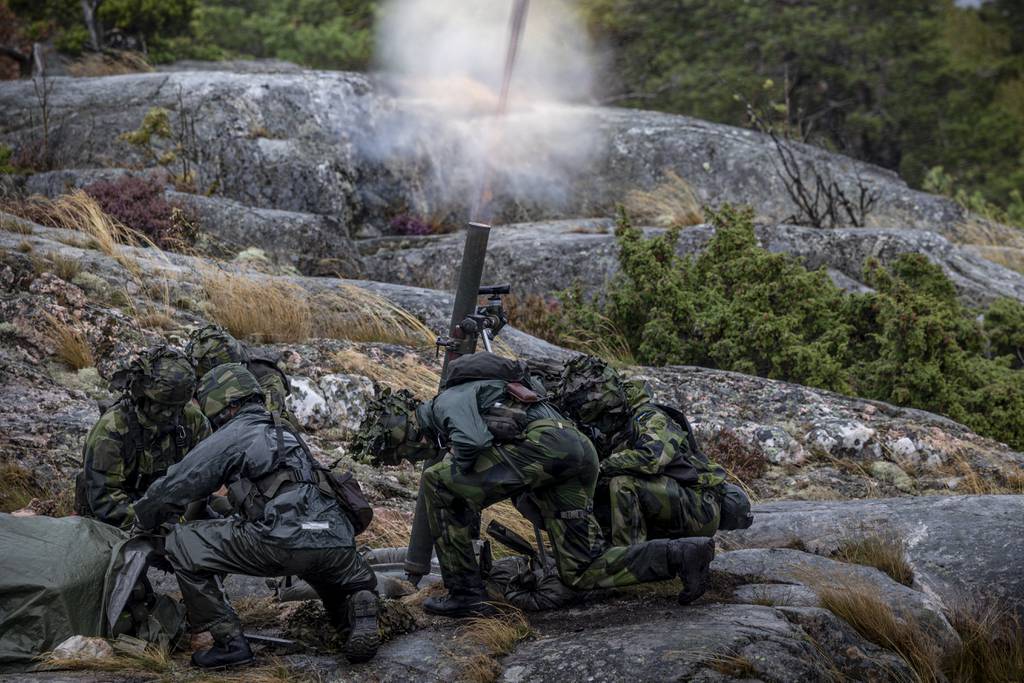HELSINKI — Sweden’s newly elected center-right government has prioritized spending on defense-strengthening measures in its draft budget bill for 2023, eying to edge the country closer to NATO’s target quota.
Sweden, along with fellow unaligned Nordic nation Finland, is currently awaiting unanimous consent from NATO members to join the alliance, a process that could reach its conclusion in 2023 despite reservations about their applications being expressed by Hungary and Turkey.
The “Total Defense” focus in the Swedish government’s defense budgetary plan aims to raise military spending to 2% of gross domestic product by 2026. The defense budget is on course to grow by $800 million in 2023, backed by higher capital investments to strengthen cyber-defense, signals intelligence, defense preparedness and the expanded intake of military personnel.
“The government’s plan is that Sweden’s defense capability will be gradually expanded year-on-year going forward,” said Pål Jonson (Moderates), Sweden’s newly appointed defense minister.
The 2023 budget will give the Swedish Defense Forces’ (SDF) cyber-defense unit (CDU) a significant lift in capital spending to reinforce its capability to defend against hybrid warfare threats. These include cyber attacks and the targeting of critical infrastructure and IT-networks, both public and private, that are deemed essential to the functioning of Sweden’s economy.
Significantly, Swedish prime minister Ulf Kristersson’s conservative-leaning coalition government is proposing the establishment of a new ministry that would have joint responsibility for Total Defense’s two main components of military and civil defense.
The Total Defense format for Sweden’s national security is primed to be modified to conform with the country’s future membership of NATO.
The template for the proposed joint ministry means it will liaise closely with a new National Security Council (NSC) to be instituted in 2023. The NSC is intended to serve as a dedicated agency to analyze, review and coordinate Sweden’s security policy actions.
Sweden’s draft budget proposal for 2023 includes a provision to increase spending on defense and national security preparedness by $1.23 billion (SEK 13 billion) in 2022-2023. The SDF’s military equipment and facilities budget, according to the bill, will increase from $7.1 billion to $8.3 billion.
The scope and level of spending ambition in the 2023 defense budget is currently the subject of ongoing discussions between Jonson’s Ministry of Defense and the Parliamentary Defense Committee (PDC).
A major component in the talks will be how to effectively bolster the SDF’s procurement capacity to finance and purchase new weapons systems, a consequential issue given the rising costs associated with weapons procurement against the backdrop of a falling krona, Sweden’s national currency.
The government is concerned that a weakening krona could impair Sweden’s defense buildup and the ability to achieve the envisioned NATO spending ratio by 2026.
Defense Committee members are supporting a government policy initiative to bolster defense measures by increasing the SDF’s order authorization on new weapons systems by over $2.9 billion beyond 2030.
Based on its present trajectory, Sweden is proposing to scale up its spending on defense and security preparedness to $12 billion in 2028. Sweden allocated $7.3 billion to that budget line in 2022, equivalent to around 1.45 per cent of GDP, the highest level since 2005.
Gerard O'Dwyer is the Scandinavian affairs correspondent for Defense News.








